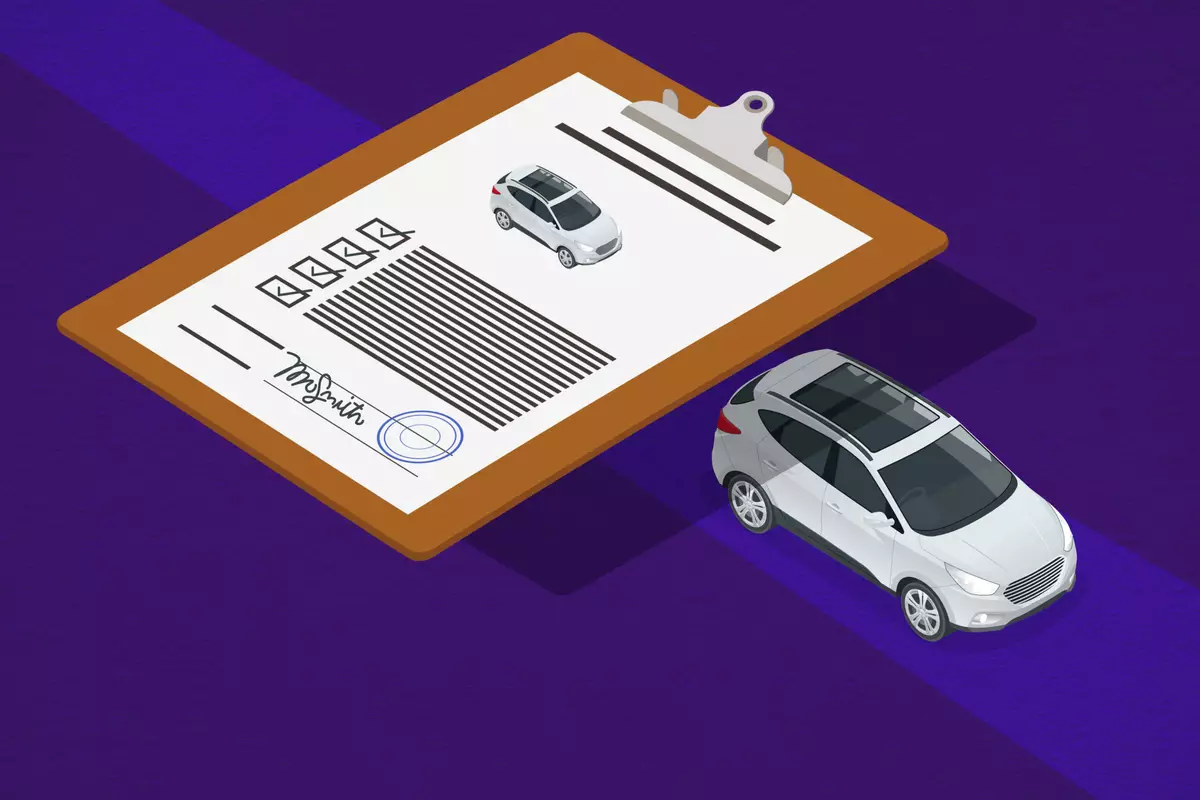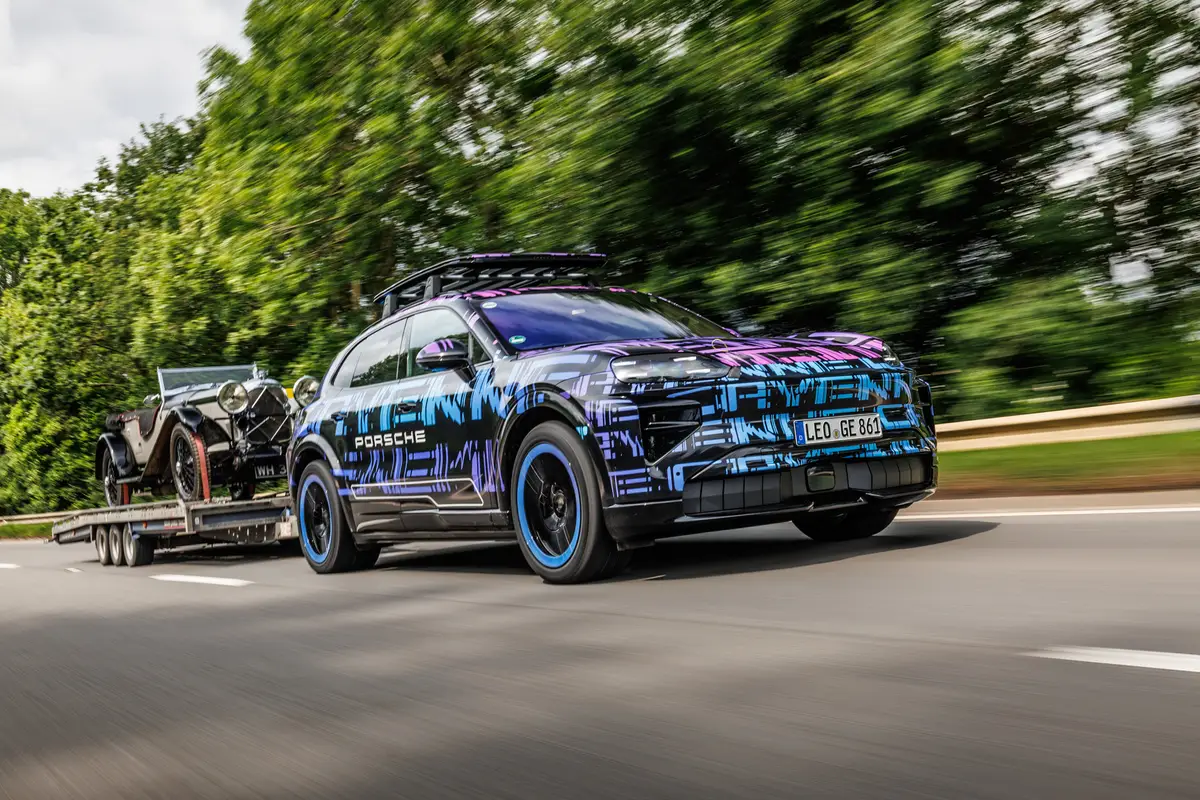Our view: 2007 Chrysler Aspen

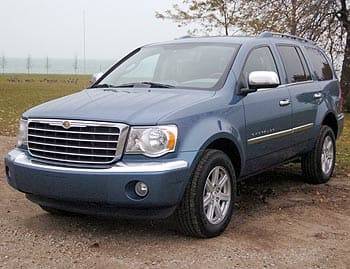
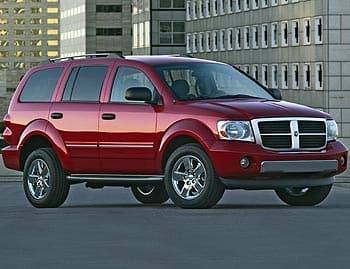
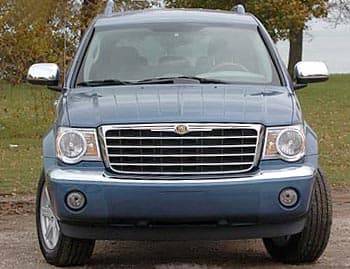

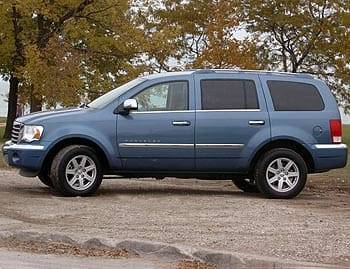
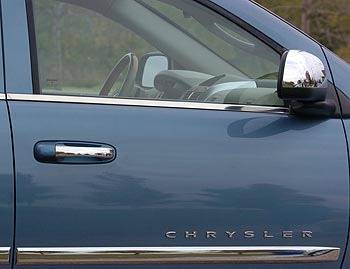
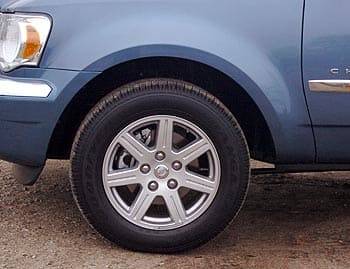
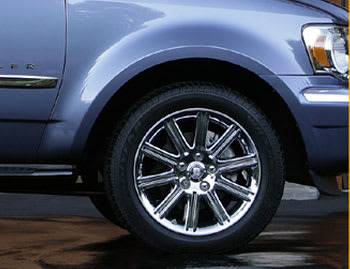
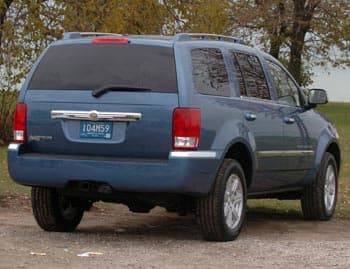
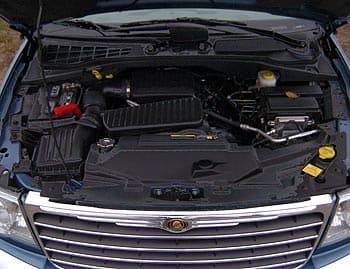
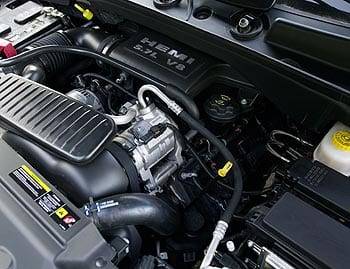
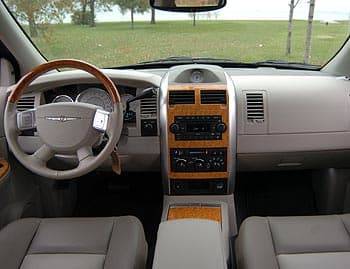
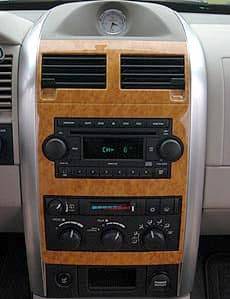
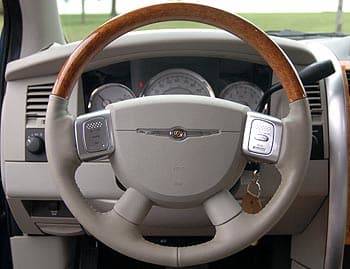
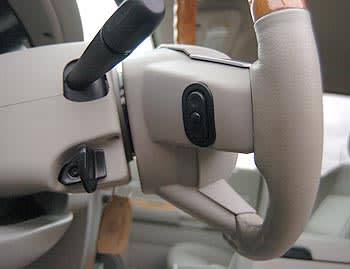
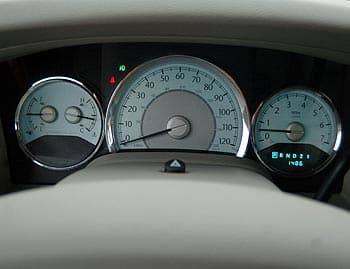
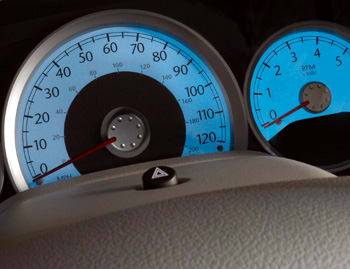
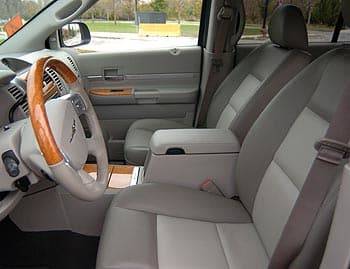
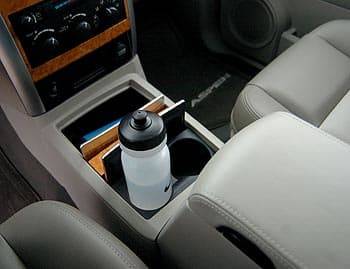
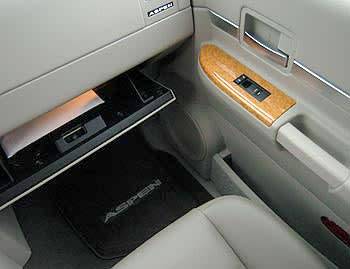
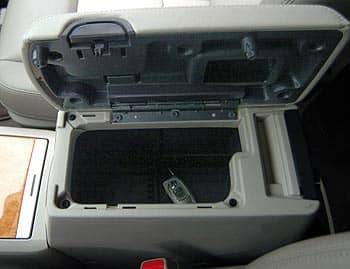
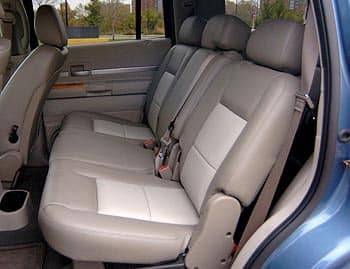
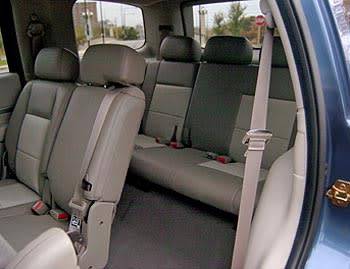
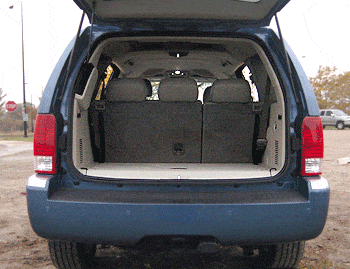
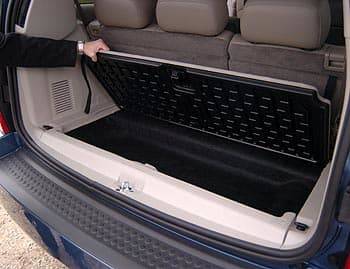
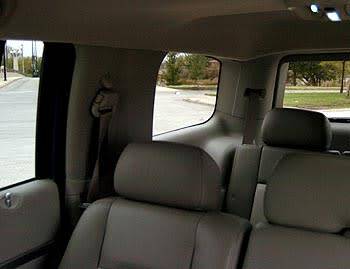


























Chrysler says the Aspen, its first SUV, competes in price with the GMC Yukon and in perception with the Lincoln Navigator and Cadillac Escalade — lofty targets indeed. Don’t be fooled: The Aspen is no Escalade. But given its bargain price, comfortable interior and upscale styling, I think it’s a compelling alternative to some of the more everyday models out there.
The Aspen is closely related to the Dodge Durango. Seating capacity is seven or eight, depending on configuration, and four-wheel drive is available. Buyers have a choice of two V-8s, including Chrysler’s 5.7-liter Hemi. I drove a four-wheel-drive Aspen with the smaller 4.7-liter V-8.
Exterior & Styling
Despite an abundance of chrome, I found the Aspen’s profile more conservative than edgy. Those familiar with the Durango will notice similarities, but there are enough differences to keep the Aspen from looking like a me-too knockoff. The crosscut grille is standard Chrysler fare, and the hood strakes mimic those on the Crossfire roadster and Sebring sedan.
My tester came with 18-inch alloy wheels and P265/60R18 tires. Twenty-inch chrome wheels with P265/60R20 tires are optional.
Here’s how the Aspen measures up against other full-size SUVs:
| Full-Size SUVs Compared | |||||||||||||||||||||||||||||
|---|---|---|---|---|---|---|---|---|---|---|---|---|---|---|---|---|---|---|---|---|---|---|---|---|---|---|---|---|---|
| 2007 Chrysler Aspen | 2007 GMC Yukon | 2007 Ford Expedition | 2007 Toyota Sequoia | ||||||||||||||||||||||||||
| Base price* | $30,745 | $34,365 | $29,175 | $33,160 | |||||||||||||||||||||||||
| Length (in.) | 202.1 | 202.0 | 206.5 | 203.9 | |||||||||||||||||||||||||
| Width (in.) | 76.0 | 79.0 | 78.8 | 78.9 | |||||||||||||||||||||||||
| Height (in.) | 73.6 | 77.0 | 77.2 | 73.6 | |||||||||||||||||||||||||
| Max. seating capacity** | 8 | 9 | 8 | 8 | |||||||||||||||||||||||||
| Turning circle (ft.) | 39.9 | 39.0 | 40.8 | 42.3 | |||||||||||||||||||||||||
| Source: Manufacturer data for 4WD-equipped vehicles. *Prices at time of publication; excludes destination charge. **May require optional equipment. |
|||||||||||||||||||||||||||||
Ride & Handling
As a body-on-frame SUV, the Aspen has an independent front suspension with double wishbones, while the rear suspension employs a non-independent, solid-axle design. Both sections have stabilizer bars.
Given the truck-based underpinnings, the Aspen’s ride is expectedly floaty. Stretches of rough pavement induce plenty of wheel hop, which makes the suspension and steering come briefly unglued — not the most responsive sensation, but something many trucks are prone to.
On the highway, the Aspen feels much more planted. Expansion joints become muted thuds, and even at 70 mph with moderate crosswinds, I didn’t find the steering wheel at all jittery.
Cornering is best done at low speeds, as there is marked body roll. The steering feels well-boosted — I easily wound the wheel with one hand — and, as has become the norm for this class, there’s very little feedback.
At just under 40 feet, the Aspen’s turning circle is better than that of most competitors.
Going & Stopping
While the Durango uses a V-6 as its base engine, the Aspen comes with a standard 4.7-liter V-8. Chrysler’s well-marketed 5.7-liter Hemi V-8 is optional. Thanks to a fuel-saving cylinder deactivation feature in the Hemi that disables four cylinders under low-load conditions, it achieves incrementally better gas mileage than the base V-8. With either engine, the Aspen is not substantially more — or less — thirsty than its competitors.
| Aspen Engines | |||||||||||||||||
|---|---|---|---|---|---|---|---|---|---|---|---|---|---|---|---|---|---|
| 4.7L V-8 | 5.7L V-8 | ||||||||||||||||
| Horsepower (@ rpm) | 235 @ 4,600 | 335 @ 5,200 | |||||||||||||||
| Torque (lbs.-ft. @ rpm) | 300 @ 3,600 | 370 @ 4,200 | |||||||||||||||
| Transmission | 5-speed automatic | 5-speed automatic | |||||||||||||||
| Max. towing capacity (lbs.) | 7,500 (2WD); 7,350 (4WD) | 8,950 (2WD); 8,750 (4WD) | |||||||||||||||
| EPA-estimated gas mileage (city/hwy, mpg) | 14/19 (2WD); 14/18 (4WD) | 15/20 (2WD); 14/19 (4WD) | |||||||||||||||
| Required fuel | Regular (87 octane) or E85 (most states) | Regular (87 octane); midgrade (89 octane) recommended | |||||||||||||||
| Source: Manufacturer data | |||||||||||||||||
The Aspen I tested came with the 4.7-liter V-8 and the standard five-speed automatic transmission. Though the engine makes a modest 235 horsepower, it churns out 300 pounds-feet of torque at a fairly low 3,600 rpm. Horsepower comes into play as the engine revs, but torque moves things from a standstill — especially important for heavier vehicles — and the V-8 offered plenty of power around the city.
At highway speeds, the engine settles into a fifth-gear stupor, turning around 1,800 rpm at 65 mph. Kickdown takes a bit more pedal, and passing maneuvers — likely in fourth gear — aren’t especially energetic. As the engine passes 4,000 rpm, there’s more noise than power. The Hemi presumably offers a better experience, so drop me an email if you’ve driven an Aspen or Durango with it.
The Aspen’s four-wheel-disc brakes have standard ABS. They felt mushy, but did their job when called upon. Hard stops are accompanied by some chassis dive, and afterward it can take the engine a moment or two to start crawling forward again.
Rear-wheel drive is standard. Four-wheel-drive models with the 4.7-liter V-8 include a single-speed transfer case. There is no two-wheel-drive mode — only four-wheel drive and four-wheel-drive lock. The latter distributes equal power to each axle via a locking center differential. In my tester, the system managed seamless switches between the two modes. In four-wheel-drive Aspens with the 5.7-liter V-8, a two-speed transfer case includes four-wheel-drive High and Low modes for even more control, something not many suburban SUV owners are likely to need.
The Inside
Thanks to broad doors that opened wide, I had no problem getting in. I’m nearly 6 feet tall, however, so shorter drivers may want to spring for the optional running boards — otherwise it could be a bit of a climb.
The front seats are comfortably wide, though the cushioning felt a bit firm for my taste. A standard eight-way power driver’s seat offers plenty of travel in all directions. The steering wheel tilts but doesn’t telescope; its fixed position, extended quite far from the dashboard, may prove too close to shorter drivers. They should also note the brake pedal’s position, rather high off the floor. Amanda Wegrzyn, a Cars.com editor, found it a strain for her smaller feet to reach. If you find yourself in the same situation, check out an Aspen with the optional power-adjustable pedals to see if they actually lower the pedal height or merely move it fore and aft, and whether they help distance you better from the steering wheel.
The Aspen’s dashboard feels contemporary, but it’s vertical enough that there’s no mistaking it for that of a car. The splotches of faux wood and metal trim in my tester looked far from genuine, but I’ve seen much worse. The instruments and controls are easy to see and use, though the manual air conditioning had an outdated blue-to-red slider — especially inconvenient if you’re trying to adjust the temperature over a bumpy road. Go for the optional automatic climate control and its digital setup.
Thanks to a high ceiling, the second and third rows offer ample headroom. In my Aspen, each row had three seats. The fixed second row is positioned fairly close to the front seats, so legroom is a bit tight. The payoff comes in third-row legroom, which I found especially generous given what’s normally offered in this segment.
Safety
All Aspens come with standard side curtain airbags for all three rows. Antilock brakes are also standard, as is an electronic stability system with Chrysler’s Electronic Roll Mitigation. ERM attempts to predict rollovers using information from the stability system, and it can apply individual brakes in an attempt to keep the Aspen on all fours.
As of publication, the Insurance Institute for Highway Safety — our preferred source — has not yet crash tested the Aspen. The National Highway Traffic Safety Administration awarded the Aspen five stars, its highest rating, for frontal impacts.
Depending on drivetrains, NHTSA says the Aspen has a 19 to 21 percent chance of rolling over in a single-vehicle crash. SUVs typically range from about 13 to 33 percent, according to NHTSA.
Lower child-seat anchors are included in the outboard second-row seats. Top-tether anchors are included for all three second-row positions, but they’re buried near the base of each seatback and require parents to maneuver the tether strap between the head restraints and down the seatback. The third row offers a more user-friendly tether anchor midway down the center seatback with a clearly marked cover, but there are no lower anchors for any of the three positions. As a whole, it’s a perplexing setup that could be a lot better.
On the upside, all seats come with head restraints, and each one extended high enough for me.
Cargo & Towing
Cargo room behind the third row totals 19 cubic feet. A shallow storage well can accommodate a first aid kit or other small necessities, but it’s not deep enough for larger items. The third row folds nearly flat, as does the second row. With all the seats down, maximum cargo room measures 102.4 cubic feet.
The towing capacity in a properly equipped Aspen totals 7,500 pounds with the 4.7-liter V-8 and 8,950 pounds with the Hemi. Adding four-wheel drive drops the rating by 150 or 200 pounds, depending on the engine.
Features
Starting around $31,000, the Aspen includes seating for eight, as well as power accessories with remote keyless entry, a four-speaker CD stereo, a power driver’s seat and a full complement of safety features. My four-wheel-drive tester added optional leather upholstery, a rear backup sensor, a power liftgate and an Alpine audio system, among other items. Additional options include the Hemi V-8, a moonroof, a rear entertainment system and a navigation system. A fully-loaded Aspen costs around $45,000.
Aspen in the Market
The Aspen’s comfortable interior, available Hemi engine and raft of standard safety features deserve a tip of the hat, but what truly stands out is its price. It starts thousands of dollars below most of its competitors, and its overall refinement is competitive with all but GM’s redesigned SUVs — the Chevy Tahoe, GMC Yukon and their siblings — which cost a lot more.
In an era of high gas prices, those who don’t truly need full-size dimensions and lots of towing capacity should look elsewhere — crossovers, minivans, you name it. But if you’re really in the market for one of these ogres, the Aspen is certainly worth a look.
| Send Kelsey an email |

Former Assistant Managing Editor-News Kelsey Mays likes quality, reliability, safety and practicality. But he also likes a fair price.
Latest news
